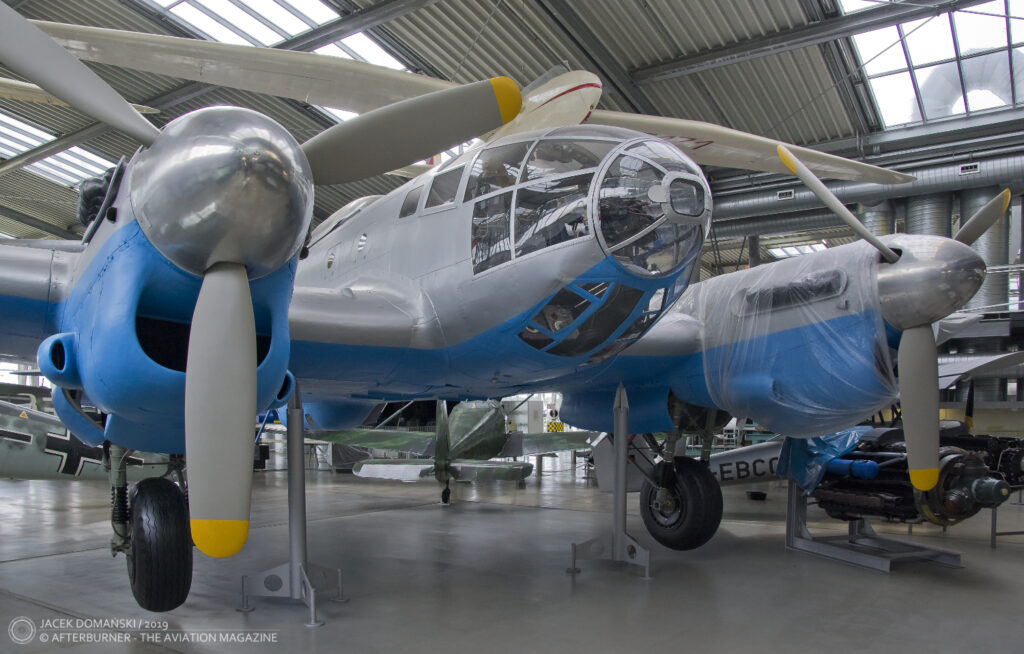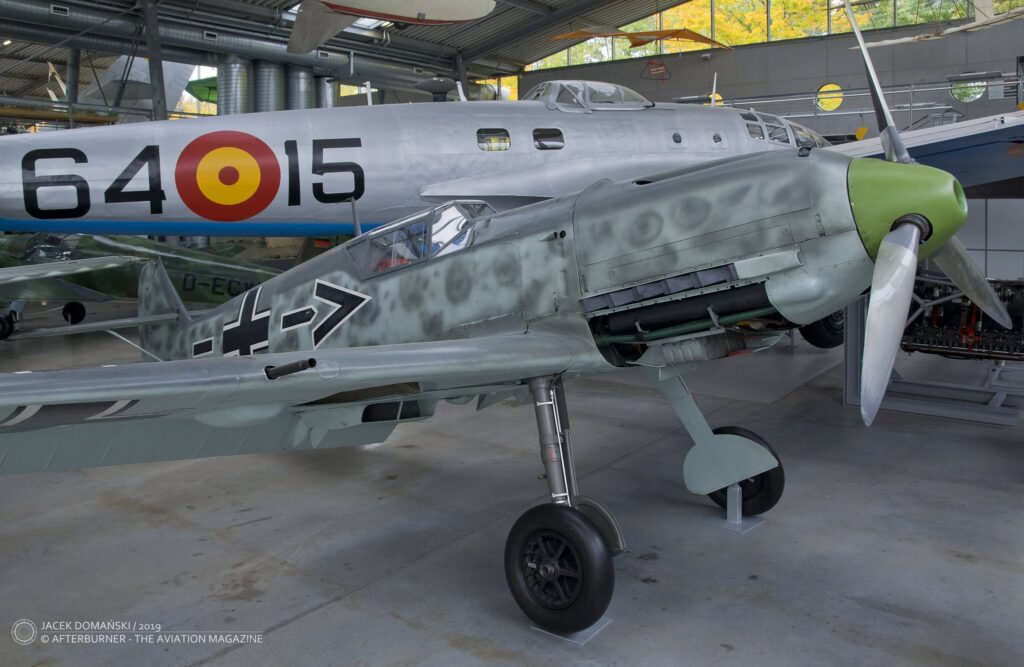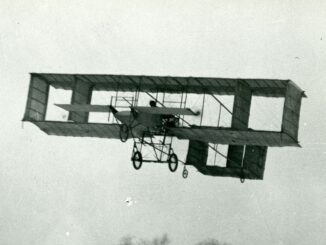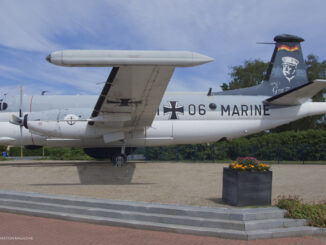 On 24th February 1935, the first prototype of German heavy bomber Heinkel He 111 performed its maiden flight at Rostock-Marienehe.
On 24th February 1935, the first prototype of German heavy bomber Heinkel He 111 performed its maiden flight at Rostock-Marienehe.
The Heinkel He 111 bomber and its development can serve as an example of German re-armament of the early 1930s. After the country´s defeat in the Great War, the Treaty of Versailles took away all the illusions related to quick reconstruction of German military power. The Weimar Republic was banned from having any armed forces apart from a small Reichswehr (Reich Defence) force of 100,000 men. In addition, no air force was allowed to exist.
Nevertheless, many Germans have never accepted the situation and worked towards restoring the country´s armed forces at its full strength. According to them, it would happen sooner or later, thus it felt wise to be prepared.
Ernest Heinkel, aircraft designer and manufacturer, was one of them. Despite the fact the war was over, and despite the restrictions set by the Treaty of Versailles, Heinkel did not stop his aviation developments. During the 1920s, he worked on some new designs, especially military seaplanes for Sweden and Japan. Then, when Germany was allowed to develop civil aircraft, Heinkel switched to passenger aircraft.
Heinkel´s idea was to design the passenger aircraft that could be used as a base for future military aircraft. He also planned to build the fastest airliner in the world, with the ability to convert it into a fast bomber. Although Heinkel´s plans were treated sceptically by authorities of the Weimar Republic, he quickly found many kindred spirits among the Nazi party officials. And, when Hitler and his accomplices took power in Germany, Heinkel was almost immediately recognized as ´defence industry leader´ (Wehrwirtschaftführer) with great commitment to country´s re-armament.
Supported by the highest Nazi authorities, Heinkel moved his aviation plant to a new site in Rostock-Marienehe and significantly extended it. He then hired Siegfried and Walter Günter – twin brothers and aviation engineers – to work as aircraft designers for Heinkel Flugzeugwerke.
Heinkel He 70 ´Blitz´ (English: lightning) was among the first projects finalized by Siegfried Günter in the new Heinkel´s factory. It was a fast mail and passenger aeroplane of modern aerodynamic design and fully retractable main landing gear. The aircraft was powered by a single BMW VI V-12 engine, generating 630 hp. On 1st December 1932, the He 70 performed its maiden flight and, over the following year, set a few aviation records in speed categories.

Although being single engine-powered aircraft, the He 70 already featured many design ideas that were used by the Günter brothers in their following development – twin-engine heavy bomber designated He 111.
The new aircraft was developed in disguise, officially being just another passenger airliner. It initial sketches resembled the He 70 so much, that the aeroplane was nicknamed the Double Lightning (Doppel-Blitz).
On 24th February 1935, the first prototype of the He 111 performed its maiden flight, flown by Gerhard Nitschke, the main test pilot of the Heinkel´s factory. That first aircraft was built as military variant, while the second to fourth prototypes were completed as civilian airliner. The passenger variant of the He 111 made its first flight on 12th April of the same year.
The new Heinkel bomber entered the competition for the standard German bomber aircraft, against Junkers Ju 86 and Dornier Do 17. All of the competing aeroplanes had certain advantages and disadvantages, therefore the Ministry of Aviation (Reichsluftfahrtministerium) finally approved all three designs for serial production.
However, the first production examples were not received well by their crews. One of the reasons was that the He 111 was significantly underpowered. Initially, Heinkel wanted to equip the aircraft with two DB 600 engines, each generating 1000 hp. Regrettably for him, they were restricted only for Messerschmitt Bf 109 fighters and the He 111 had to fly with two abovementioned BMW VI powerplants.
At the end of 1936, an upgraded variant designated He 111B was introduced, with DB 600C engines. The power was increased by 200 hp but it still seemed not enough. Nevertheless, more than 400 aircraft of the B variant were manufactured. Search for suitable engines, really complicated in harsh conditions of German industry shortages, was continued until 1938.

In February of 1938, He 111E was introduced, the variant that made its debut in combat – later that year, a certain number of those bombers was deployed to Spain and used there operationally by the Condor Legion.
Further development of the He 111 was continued in the coming years. Although, since the second year of the war, the aircraft began to be overshadowed by Junkers Ju 88, Germany was not able to replace the He 111 completely. Therefore, the bomber that represented design ideas of the mid-1930s was manufactured until the late 1944. In 1943, there were still 1,405 He 111s built, compared to 2,160 Ju 88s. Officially, its production of the He 111 was ceased in September of 1944 with approximately 7,600 examples of the aeroplane built.
Besides Germany, the He 111 was operated by Turkish, Chinese, Bulgarian, Romanian and Hungarian air forces. After the Spanish Civil War, the Spanish Air Force took over the surviving aircraft of the Condor Legion and additionally acquired six new aeroplanes in the 1940s.
In 1945, Spain launched its own production of the aircraft, designated CASA 2.111A. They were equipped with original Junkers engines and that caused maintenance issues in the 1950s. As a solution, since 1956 the Jumo 211 engines were replaced with Rolls-Royce Merlin 500 (variants designated 2.111B to 2.111F). The Spanish-built version of the He 111 was used operationally until the early 1970s, with 236 aircraft manufactured.
The Heinkel He 111 had become, mainly due to its characteristic shape and glass nose, one of the iconic aircraft of the World War II. Especially, it was the symbol of the German aggression and air raids of the 1939 and 1940.
Despite the high number of manufactured examples, only a few He 111 survived until today and none of them is a complete aircraft. In addition, twelve of the CASA 2.111 of different variants were preserved in aviation museums worldwide.

Cover photo: Captured Nazi aircraft in use by the R.A.F. for demonstrations and identification purposes. a Heinkel III in flight – Original wartime caption. Picture issued 1942. (© IWM CH 5362 – IWM Non-Commercial licence)



